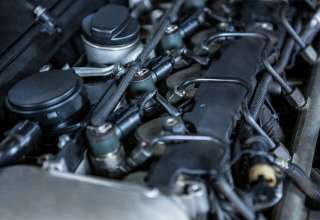Anyone who has ever driven a car will know that there are three pedals on the floor at the driver’s feet. Or at least that’s how many there are in a manual. The first pedal is the accelerator which, when pushed, sends petrol to the engine. The second is the break, which when pushed slows the car down. The final pedal is the clutch and it is something of a mystery. It is depressed each time the driver changes gears, but what does that mean and what is going on in the background when it is being pushed. Here are the answers to some of these questions and some insights into the clutch, which you probably never even though to ask.
What is behind the clutch
The clutch pedal on the floor of a car is connected to a complicated kit mechanism that, in simple terms, connects the engine to the wheels. While all manual cars have clutches, the clutch kit in each car is different from eth next. In other words, a Subaru Forester clutch could not be switched out for one from a Mini Cooper or a Toyota Hilux. In short, then, the clutch is a system that transfers power to the wheels, and which uses the gears to facilitate this process.
The history of the clutch
While it is not entirely clear who made the first automobile, Motoring historians are generally if the opinion that is was the German Karl Benz whose Benz Patent-Motorwagen came into being in 1885. It was subsequent to this that the first clutch was installed in a car, with 1893 being the year that Duryea’s dry single plate clutch came into production. While it worked in principle it burned out very quickly and needed to be replaced after a few hundred miles making it an annoying component. It was as late as 1921 when Herbert Frood of England refined the product sufficiently to ensure that it was a more durable, lasting piece of the puzzle.
What about automatics
The first automatic transmission came into being as late as 1939 with the US company General Motors installing these in their Cadillac and Oldsmobile models. Although there had been experiments and installations of automatic transmissions prior to the launch of the GM Hydramatic, this was the first time that automatic transmissions had been installed end masse in regular passenger vehicles.
What about clutch bags
For some reason, there is a perception amongst non-mechanical people that a clutch bag was originally designed to carry the clutch pedal of a car. This is absolutely not the case. As is often the case in English the word ‘clutch’ has multiple meanings. And while the clutch is very definitely a word that describes the automotive part that we are discussing, it can also mean to hold something very tightly. And that is where the term clutch comes from in the clutch bag. Unlike a bag with a strap that goes over the shoulder, a clutch bag is a strapless bag which required the carrier to hold on to it very tightly. It almost certainly has never contained a clutch pedal!











